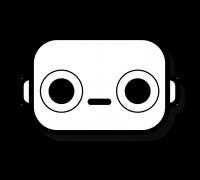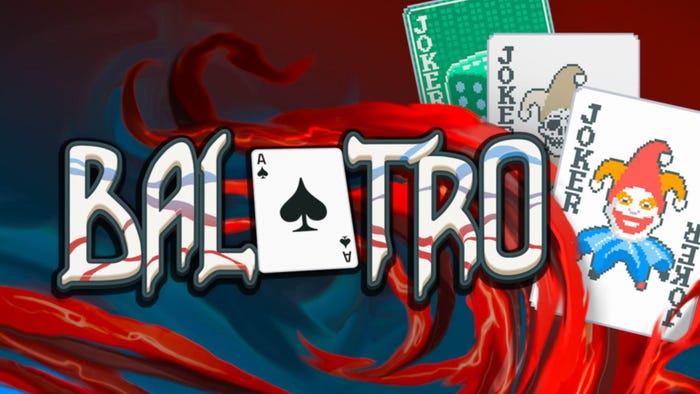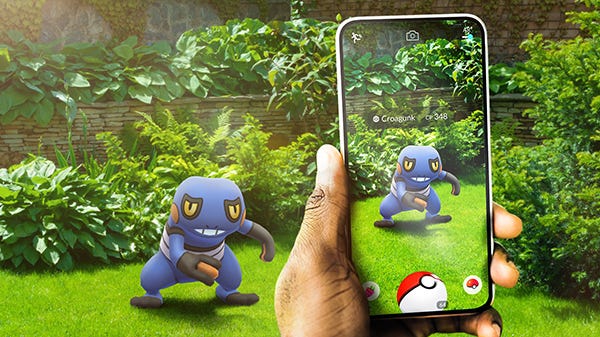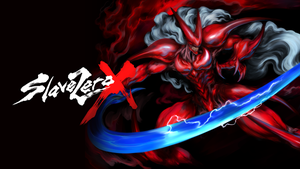
Featured Blog | This community-written post highlights the best of what the game industry has to offer. Read more like it on the Game Developer Blogs.
Subversive Humor in Games
I am here to advocate on behalf of the ridiculous.
To be more specific, I aim to show you that we need more subversive humor in games and why you don’t actually have to be ‘serious’ to be serious.

This is a re-post of an essay I wrote for First Person Scholar
————————————————————-
Subversive Humor in Games
I am here to advocate on behalf of the ridiculous.
To be more specific, I aim to show you that we need more subversive humor in games and why you don’t actually have to be ‘serious’ to be serious. In fact, it might be easier to talk about a serious object and have the audience respond to it, if you present it in a funny way. Being funny doesn’t mean you are not serious; it just means that you chose another tactic to present your message. Humor, historically a persistent part of human culture, inhabits several different roles in that culture. Among them are the potential to become a subverting tool and a way to give voice to minorities and oppressed groups in order to counter the mainstream culture.
I have often found myself frustrated that as a lover of both humor and games I couldn’t find a lot of funny games, let alone games which have strong elements of subversive humor. Where were the game versions of Monty Python or Mel Brooks? Why does it always feel like games need to be extremely serious and angsty in order to be taken seriously?
In reality this is not exactly the case. There are funny games out there, and occasionally there is subversive humor in games. It is just not as popular as it is in other forms of entertainment, such as film or novels. My goal is to try and create a discussion about subversive humor in games: which games use it, knowingly or unknowingly, how can we tell the difference between subversive humor and “regular” humor and how we can create more subversive funny games.
So what do I mean when I talk about subversive humor?
In the simplest of terms, subversive humor is humor which criticizes powerful dogmas, concepts or institutions. Subversive humor often functions as a tool to express frustration, dissident and to ultimately challenge existing power relation and convictions. It is a powerful way to make fun of established and normative structures by exaggerating and ridiculing them and, importantly, offering an alternative interpretation of those structures. Subversive humor uses comedic constructs such as irony, sarcasm, satire and parody to examine cultural and social prejudices. To summarize, subversive humor can be viewed as more than fun, ‘harmless’ entertainment. It presents an alternative means of expressing criticism that can’t be always be expressed in other situations. Through the ridiculous we can gain new insights, which we might not be able to reach through other means (Kramer, 2013).
Subversive humor can fulfill several different unique purposes. Firstly, humor is approachable; it can disarm critics by cutting through the clutter or noise around issues that make people feel uncomfortable. Humor is often used as a way to ridicule the oppressor by creating a dilemma they can’t win. Creating a situation in which any options (such as responding or ignoring) could lead to ridicule by the masses. This leads to another important element: humor melts fear – when you ridicule someone or something, you no longer fear them or it. It also acts as a healer of sorts, serving as a coping mechanism or as stress relief by highlighting and expressing frustration with problems out of direct control. Lastly, humor gives you power when you don’t have it. It has the ability (even if temporary) to take away the power of the “oppressor,” making it a powerful tool that should be considered in any creative critical process (Sorensen, 2008).
In order to understand what makes something funny, it is useful to understand the common traits of all humorist situations. Throughout history, theories have attempted to group together the contextual elements of what make situations funny, and theories of humor are one way to try and sort out the psychological conditions that provoke laughter. Although there are several theories of humor, they tend to fall under one of the following three categories: superiority, relief and incongruity (1). While, in my opinion, Superiority and Relief theory are less relevant to this discussion, Incongruity is key to the creation and understanding of subversive humor. It is not that subversive humor cannot come from superiority or relief, but understanding incongruity will be essential for this discussion.
Incongruity Theory states that humor is the result of observing something which disrupts our expectation. According to the incongruity theory, in order for something to be funny, two utterly disparate ideas have to mingle. The joke’s success depends on two things: the degree of contrast between the two elements and how complete the fusing is. Subversive humor is more successful when it brings to light a real connection between two things which are regarded quite differently, which in turns forces a complete reversal of values. Theorists, when describing humor as incongruous, reason that humor comes from the disruption of expected patterns (Morreall, 2013).
The History of Game Comedy
Unlike other fields of art and entertainment, humor never managed to become a prominent fixture in the game industry. Not that there aren’t funny games out there, but they never seem to enjoy as much popularity as comedy does in other medium (Parkin, 2014). The reasons for that are unclear, but it might be due to a few relatively simple reasons. Designing humor for games can be quite difficult because concepts like comedic timing and can’t really be anticipated in games, simply because of the designer’s inability to completely control the players’ actions. This requires a new way of integrating humor in games, which due to games’ relative newness as field, have yet to be solved in a satisfying way. (Mackey, 2009) The repetitive nature of games, where certain parts of games will likely be played a few times before players manage to succeed, is also not very friendly to traditional forms of comedy: replaying a moment can quickly make jokes stale. It could also be just the simple fact that due to the high production cost of games, the industry is just afraid to take risks (Gonzalez, 2004). Moreover, video games’ (especially mainstream titles) tendency for big heroic stories about victory, triumph and overcoming the odds don’t lend themselves seamlessly to comedy (Parkin, 2014).
However, it wasn’t always this way. Early game development, presumably due to being in a more experimental phase, was far more populated with funny games. The early 90’s were home to a few innovative and successful outings from Sierra and Lucas Art. Sierra point-and-click adventure games, like Leisure Suit Larry. Lucas Arts, on the other hand, produced some successful (and still popular) pop culture parodies, like Monkey Island (a pirate movie parody) and Sam and Max (detective comedy). Those games not only had funny writing and cartoony art style, they also used puzzle mechanics as a comedic tool (Mackey, 2009). The jokes would often come from the solutions to the puzzle, which would create unexpected, incongruous connections between objects that advance the game plot and create comedic connections which have the added benefit of making the player have some control of the comedy (Gonzalez, 2004). So, for example, if a game asks you to find “an iron maiden” what you have to find is not necessarily an actual iron maiden but rather something very different, creating a humoristic situation by making an unexpected (but logical) connection between two entirely different objects.
While most of the games mentioned above manage to successfully merge humoristic elements in their gameplay, the type of humor presented doesn’t really fall into the category of subversive humor. While those games are funny, they don’t really question or criticize structures or conventions; rather, they tend to operate in them, or in certain cases even enforce them. Leisure Suit Larry, for example, might have been a successful raunchy comedy, but its humor style enforced existing stereotypes of the lonely nerd and female objectification, as opposed to subverting these stereotypes (2). The Lucas Arts parodies, despite occasional subversion (3). created parody that loved the subjects it parodied rather than used parody to examine the less than savory aspects of the subject.
That doesn’t mean that there weren’t any subversive comedy games at that period, or games which successfully deploy subversive humor as a main feature. One the best example was the text adventure game Bureaucracy. The 1987 game made by the great satirist Douglas Adams and released by Infocom, was a Brazil-like ridiculous satire of trying to navigate the bureaucratic system. The premise is simple: the player just moved into a new house and now needs to send the bank a change-of-address form. Unfortunately the bank has some rather complicated rules and things are not as easy as they seem (4). Adams creates a narrative situation which highlights, using humor, the faults of the system and exposing it to ridicule from the player. The text adventure format certainly helps. It is based on telling narrative in a game format, the luck of graphics and the simple mechanics makes the humor and the writing the main focus of the game and help the subversive message be clear (5).
With the death of the point-and-click adventure game format, and the rise in popularity of other genres and formats, it seems that funny games might have been left on the wayside. It is not that humor disappeared, but instead it had become a secondary fixture in many successful titles. Games like Portal, Borderlands, GTA and Saints Row, have strong humoristic elements to them despite not being billed necessarily as comedic games. However, in recent years, with the rise of the indie games, more games seem to have elements of subversive dark humor, especially games who already have strong subversive elements to them (Parkin, 2014). Other games, like those made by Telltale Games, try to resurrect the humor and the comedic mechanics of the point-and-click adventure games of the past. (Mackey, 2009).
As is the case with the point-and-click adventure games, in most cases the humor deployed by those games is not subversive. GTA might be a funny game, and its brand of humor is quite dark, but it is not subversive. While Saints Row 4 has very strong subversive elements (the character selection for example), I would not personally call its humor subversive – it doesn’t really try to break social conventions, being still stuck in FPS game conventions. Other games that are subversive (like Papers, Please for example) are not necessarily subversive due to their humor, although there is humor in the situation you are playing in (Parkin, 2014). In many way,Papers, Please is similar to Bureaucracy: they are games that use the mundane to highlight the failure of the system, but while Bureaucracy uses humor as a main mechanics, Papers, Please’s humor is secondary(6).
There is an exception in this group: Portal and Portal 2, which are both subversive narratively and employ a generous amount of subversive humor. The Portal games offer funny and subtle in-game criticism of gaming and narrative, making games that challenge the convention of what a game should be. GLaDOS’s witty and macabre one-liners, used as a testimony about the perils of test subjects past, can also be used as an allegory for behavioral psychology in games (prohibiting un-normalized player behavior for example) and as an exaggerated comedy of the iterative process of game design. Portal 2 adds the theme of authorship and creative invention to Portal’s comedic exploration of the limitation of games and game narrative (VentureBeat, 2011).
Glitchy Subversive Comedy
Interestingly enough, some of the best cases of humor in games actually comes from the players. The rise in computational power, and the popularity of hyper-realism created a situation in which games are bigger (in scope) than ever, but also are released with far more bugs and mechanical glitches than the smaller games of the past. Those glitches and bugs are often utilized by the players to create humoristic situations in not particularly funny games. For example, the Skyrim buckets on the head bug became one of the most popular examples of a humoristic use of a game bug, with the added bonus of giving players an advantage while playing. Newer trends build on this, using humor not only as a main mechanic but also to subvert known games mechanics. The humor in games like Goat Simulator use humor that emerges from glitches and bugs in order to subvert game mechanics – making games not about learning from failure but rather about embracing and enjoying the failure. The games become about the comedy of failure, and how fun it is to be bad in those games, and not about learning from your mistake in order to become better in the game. Games like Goat Simulator and Octodad: Deadliest Catch (7) create incongruous connections between two polar opposites. Humor is created by pairing an abnormal object (an anthropomorphic octopus for example) and putting it in a ‘normal’ human setting (office), without in-game AI objects (characters, animals etc.) acknowledging the abnormality. A secondary layer of humor, the use of glitch game physics, help create a surreal and ridiculous comedic experience which subverts some basic mechanics and concepts. Specifically, subverting the meaning and use of failure.
Jesper Juul defines failure as a manifestation of a gamer’s limitations. The player is the one who controls the in-game actions, and when it occurs, failure is perceived as his or her fault. Failing the game is synonymous with the shortcomings of the player, specifically his or her skills. According to Juul, uniquely for games, failure is not only enjoyable, but the absence of failure might result in a game not being fun. If the player doesn’t fail, or doesn’t fail enough (making the game too easy) it is very likely they would experience negative emotions which would hold them back from enjoying the experience of play. Juul claims that the negative emotions which dominate failure can become enjoyable when the player completes the game, goes over an obstacle and visibly raises his or her skill level. Failure is a catalyst of the act learning in games (Juul, 2013). In this respect humor (in general) can be regarded as an important yet less explored tool which can contribute to the role of failure in games, lowering the sting of the failure and increasing the enjoyment of it. If humor ultimately can contribute to a basic factor in gaming, like failure, can subversive humor subvert those factors? Give them a new interpretation?
Goat Simulator and Octodad don’t treat failure the same way. By all accounts, failure is the main mechanic of those games, except that the positivity enjoyed by getting better at the game is a negative outcome. Getting better in a game like Goat Simulator strips away all the enjoyment out of it, and the comedy in such a game comes from the failure. The worse and more creative a failure is, the more successful and funny the game is. These games utilized humor in a very similar way to the glitch humor deployed by players, using bugs and glitches, to create absurd and surreal situation which subvert the mechanics of failure in games (8). This creates comedy which comes from the subversion of players’ habits or at least subversion of what we expect player habits to be. In this case, subverting the player’s relationship to failure in game and the concept of ‘learning to play’. In this lies the strength of such approach the subversive humor: using humor to create new gameplay paradigms, by easing the player and introducing them to new ideas in a funny and approachable way and by also giving the players more agency on their actions while playing.
Please Make Seriously Funny Games
I would like to end this with a short plea.
Hopefully by the time you (the reader) finish reading this you are somewhat excited about the idea of using humor as a subversive tool. Or at least you are interested in playing games with more subversive comedies in them. Humor is a powerful tool to create subversion without alienating your crowd. The number of games that do use subversive humor is not large, but those few games manage to create games that managed, in a sophisticated way, to subvert game mechanics, politics and ideas, while also being extremely funny.
With the recent controversies surrounding the gaming world’s problems with inclusivity, the under-representation of minorities in visible roles and the more critical look at the roles of computer games in current culture, subversive humor might prove, like it has done in another instance, to bridge the gap between the critics, the designers and the audience. Subversive humor is a tool for creating critical subversive games, which tackle serious issues of representations and social criticism, while making the message more approachable to an audience that might be less than responsive to it. Subversive humor can provide an alternative way to express dissent with current oppressive trends in the game industry, with the added benefit of making players receptive to new gaming concepts. It is a powerful tool, which should be used and considered by game designers who are interested in exploring alternative approaches for designing games.
Works Cited
Gonzalez, L. (2004). A Brief History of Video Game Humor. GameSpot. Retrieved fromhttp://www.gamespot.com/articles/a-brief-history-of-video-game-humor/1100-6114407/
Parkin, S. (2014, March 14). Can video games ever be funny? BBC. Retrieved fromhttp://www.bbc.com/future/story/20140320-are-these-video-games-funny
Morreall, J. (2013), “Philosophy of Humor”, The Stanford Encyclopedia of Philosophy, Edward N. Zalta (ed.), Retrieved from : http://plato.stanford.edu/archives/spr2013/entries/humor/
Mackey, B. (2009) “No Laughing Matter: Making Humor Work in Games” Gamasutra. Retrieved from:http://www.gamasutra.com/view/feature/132586/no_laughing_matter_making_humor_.php?page=2http://www.gamasutra.com/view/feature/132586/no_laughing_matter_making_humor_.php?page=2
Juul, J. (2013). The Art of Failure: An Essay on the Pain of Playing Video Games. Cambridge, Massachusetts: the MIT press .
Kramer C. A (2013), An Existentialist Account of the Role of Humor Against Oppression Kramer. Humor 26, Issue 4, 629–651.
Sorensen, M. J. (2008), Humor as a Serious Strategy of Nonviolent Resistance to Oppression. Peace & Change, 33: 167–190.
“The Role of Meta-humor in Portal 2 and Sword & Sworcery EP.” VentureBeat.11 May 2011, Retrieved from: http://venturebeat.com/2011/05/11/the-role-of-meta-humor-in-portal-2-and-sword-sworcery-ep.
————————————————————–
[1] More about theories of humor can be found here:https://www.msu.edu/~jdowell/monro.html
[2] Leigh Alexander has a much kinder view on Leisure Suit Larry that is worth readinghttp://www.gamasutra.com/view/news/196824/Opinion_Why_Leisure_Suit_Larry_should_never_have_been_remade.php)
[3] Monkey Island, had a few subversive undertones, for example the “Damsel in Distress” not being a damsel or in distress.
[4] it is worth checking the game manual, aside from being a good introduction of the game, it is hilarious http://infodoc.plover.net/manuals/bureaucr.pdf
[5] This does not make text adventure game (and specifically this one) lesser then other games, but in certain instances it is easier to convey a message using text then it is using graphics.
[6] I will argue that the humor in Paper Please is meant for mostly for the release of nervous energy and relief from the difficult subject the player is dealing with, but this is a subject for another paper.
[7] Sargon Simulator is part of those category as well, just not as successful
[8] This surreal humor is quite similar to Monty Python brand of humor, possibly making Goat Simulator the Monty Python of games.
Read more about:
Featured BlogsAbout the Author(s)
You May Also Like












